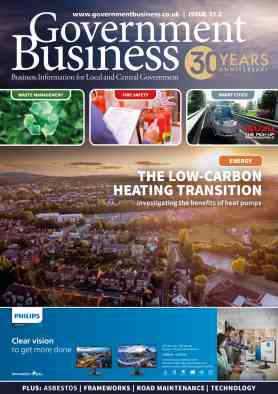Sue Robb of 4Children talks to Julie Laughton and Alison Britton from the Department for Education about the role of childminders in delivering the 30 hours free entitlement.

Following great practice to tackle public sector recruitment
Recruitment and retention remains a lively issue across public sector organisations. Karen Grave, president of the Public Services People Managers Association, looks at the pressures impacting on our workforce and examples of those leading the way in defying the odds
The public sector remains as complex, challenging and profoundly rewarding a place as ever. Listening to the headlines, the challenges are ever increasing and our capacity to have the honest debates we need to tackle some of our most pressing challenges (with credible evidence by the way) seems much diminished.
Ongoing budget pressures, ongoing public service reform, increased demand for services, ageing workforces, rapid technological advancement and media scrutiny all exert huge pressure. And of course, the last few years have seen significant policy choices that have had an enormous impact on our workforces.
IR35 legislation, has transformed, and not in an entirely positive way, public services capacity to recruit experienced and specialist skills that Interims offer. Whilst there are varying views on whether the policy is sound, what is absolutely clear is that the questions and clear issues with the process have caused extra workload, which was completely avoidable. Pay constraints, whilst lessened this year, will be a factor for years to come too. And, of course, Brexit, looms large on the minds of everyone involved in delivering public services, not least because of the already substantial consequence of non-UK nationals returning home – colleagues in the NHS have been particularly hard hit here. It’s easy to feel overwhelmed.
What does this mean for HR & OD professionals?
Constant challenge is what it means, for those colleagues tasked with recruiting staff in the first instance. Arguably this is compounded given we adhere to national pay bargaining. Over the last 10 years, we have become much more adept at streamlining processes, utilising digital media and channels more effectively, developing place-based approaches to recruiting public services professionals (rather than for example, specific local government, education, health campaigns within a geography – think county wide approached), developing more flexible approaches to reward. These are all great of course and they are delivering tangible benefits. Arguably however, they tend to be tactical responses.
Interestingly enough, the constant pressure to find new ways to recruit people in an environment where you are very often competing with other public service organisations has presented incredible opportunities.
Workforce planning – sometimes used as an epithet – is increasingly seen through a much more strategic lens. Taking a longer-term view of what type of workforce you will need in the future is forcing organisations to think much more longer term. And that is an important outcome – and one we should always have focused on.
The most effective employers increasingly think about whether we are building high performing cultures, places where employees want to stay, places that give people the opportunities to develop across their careers etc. The much lambasted STP process used to help health and social care organisations plan healthcare needs over the longer term, are in fact a brilliant opportunity to strategically plan for common workforces.
This longer-term view has also seen HR & OD professionals really look at the concept of ‘employee value propositions’. These define what our organisations have to offer our employees - why we are a wonderful place to work, what opportunities we can provide, what our employees can contribute etc. This is critical because we know that for some employees, particularly younger people, we struggle to retain them and that cannot be acceptable to anyone. In terms of opportunities, the Apprentice Levy, another fabulous idea let down by poor design and implementation, can be harnessed as a way to develop people.
Reasons to be optimistic
I’m mindful that one of the privileges of the PPMA Presidency is that you get a macro view of what is happening across our diverse HR & OD community. There are some incredible colleagues designing and developing innovative solutions that are delivering real tangible benefits. These create much needed capacity and capability.
I am also very conscious that whilst I also need to advocate and raise awareness of key issues on behalf of our membership community - it is not good enough to just focus on what is bad, difficult or dispiriting. It is incredibly important that, with my PPMA senior colleagues, I find ways to give voice to the amazing practice happening day in and day out. I feel very optimistic in this area. Our annual PPMA Excellence in People Management Awards process has five awards dedicated to excellence in recruitment practice: Best Frontline Recruitment Campaign; Best Senior Leadership Campaign of the Year; Best Social Media Recruitment Campaign of the Year; Best Value for Money Recruitment Campaign; and Best Creative Concept. In sharing an overview of two of our 2018 winners, my aim is to promote and share great learning.
Best Frontline Recruitment Campaign
This year, Cafcass won the Best Frontline Recruitment Campaign category. As of April 2017, Cafcass employed 1,165 full-time equivalent (FTE) social workers, called Family Court Advisers (FCAs). This number may sound high, but demand for services has been exponential growing whilst the demand for high quality social workers nationally far outstripping supply. As an example, the increase in the number of care applications grew 30.4 per cent between 2014-15 and 2016-17.
A strategic approach was developed and implemented, which included: using temporary resources to support front line staff, expanding online recruitment channels, delivering targeted recruitment campaigns and developing a clear employer brand. Through a huge amount of hard work there has been a 10 per cent increase in directly employed FCA’s and a 10 per cent reduction in average caseloads. This is a fantastic example of a multifaceted strategic approach which also included short term tactical activities to stabilise an organisation dealing with enormous challenges and families in real need.
Best Creative Concept
GCHQ and Penna won the Best Creative Concept award. As we would all acknowledge, recruiting for such a critical organisation that inevitably has to work in secret isn’t the easiest thing in the world – particularly as you can’t divulge the full details of what the job entails. Penna worked with GCHQ to find a solution to help them recruit hackers (not usually something we encourage in people!) and in fact that they needed over 100 specialists with unique mindsets, creativity, dedication and courage join their Computer Network Operations (CNO) department.
Using an ‘invaders’ concept, Penna created a video game which was shown at London Victoria and London Waterloo train stations. Additionally, large projections were displayed on the outside of the Bullring and Millennium Point buildings in Birmingham. The game, together with the explicit acknowledgement that GCHQ needed hackers, was unique and the results were increasable. There was a 600 per cent increase in applications per month. Impressively, female applications have increased by an overwhelming 225 per cent and applications from BAME candidates are up by a massive 100 per cent. There is more work ahead, but this shows what can be achieved with a bit of creativity and a dash of transparency thrown in.
Recruitment and retention challenges will continue to play a significant role in the day job for HR & OD professionals. But as you can see we’ve got some great practice and learning to share.
Company Focus
Located in Bromley, Japanese Knotweed Eradication Ltd has been providing solutions in the treatment and removal of Japanese Knotweed (Fallopia Japonica) for over a decade. During this time we have mastered a repertoire of methods, from herbicidal treatments to landscaping solutions, tailored to address the unique challenges our clients face with this pervasive weed.
Event Diary
UKREiiF has quickly become a must-attend in the industry calendar for Government departments and local authorities.
The multi-award-winning UK Construction Week (UKCW), is the UK’s biggest trade event for the built environment that connects the whole supply chain to be the catalyst for growth and positive change in the industry.
Supplier Profiles
Geo Energy
At GeoEnergy Design, we're on a mission to disrupt the traditional way heating and cooling ha
Latest Features
Professor Harith Alani, director of the Knowledge Management Institute at the Open University explains how AI can be used for good and bad.
Alex Lawrence, head of health & social care, techUK sets out techUK’s Five Point Plan for CareTech.












